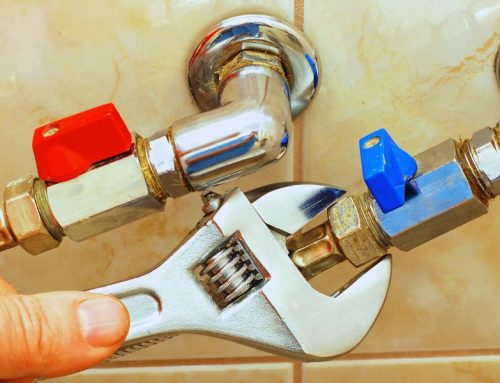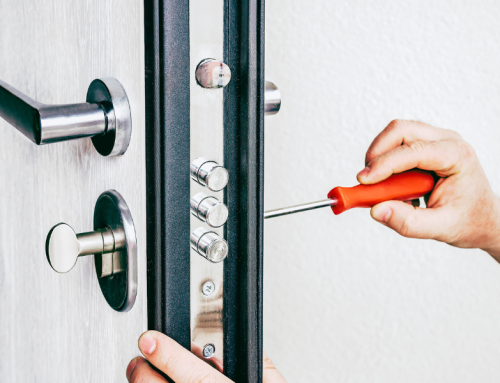Electrical problems are inconvenient and are a safety hazard for electrical systems. Identifying common electrical problems and understanding safe solutions to help you avoid major risks and dangerous situations. In this electrical maintenance guide, we’ll cover common electrical problems, and circuit breaker-tripping solutions, and offer practical electrical safety tips to keep your home safe.
Flickering Lights: Causes and How to Fix Them
Flickering lights are one of the most frequent common electrical problems for homeowners face mostly. This issue happens because of multiple causes, including:
- Loose Light Bulbs: Tighten the bulb simply to fix with carefully. Turn off the light before handling it to avoid any accident or unexpected things
- Faulty Light Switch: Just tightening the bulb doesn’t solve the problem at all, the other issue you can face is with the light switch. Replacing a worn-out switch or old switch usually resolves the flickering.
- Overloaded Circuit: Sometimes flickering occurs when using multiple appliances. This type of flickering occurs due to an overloaded circuit. Unplugging some devices or upgrading the electrical system is the best solution to reduce the overload.
How to Fix Flickering Lights: It’s safe and easy to DIY for minor issues like a loose bulb. However, call a professional electrician to assess and upgrade your system for overloaded circuits.
Circuit Breaker Tripping Solutions
Short circuits or an overload in your home’s electrical system are the causes of frequent circuit breaker trips. The solution to this problem is in comprehending why it occurs.
- Overloaded Circuits: Too many devices drawing power from the same circuit cause the breaker to trip. Unplugging some devices or redistributing them across different outlets to fix overload circuits.
- Short Circuits: When a hot wire touches a neutral wire makes a short circuit. Consequently leading to an excessive flow of electricity. You should always handle these issues by calling professional electrician electrician.
- Ground Faults: Anyhow, hot wire rubs with a grounded surface causing the breaker to trip. Like short circuits, Requires professional electrician attention for ground fault
Circuit Breaker Tripping Solutions: If you experience frequent tripping with bigger issues, call a professional electrician to evaluate your electrical system to ensure it’s functioning safely.
Fixing Dead Outlets
Dead outlets are annoying and indicate a more serious electrical issue. The first step in fixing dead outlets is identifying the root cause:
- Tripped Circuit Breaker: Sometimes, a tripped breaker causes a dead outlet. Check your breaker panel and reset any tripped breakers with a perfect match.
- Loose Connections: Over time, wiring connections inside outlets become loose. Always turn off the power before checking for loose wires.
- GFCI Outlet: Ground Fault Circuit Interrupter (GFCI) outlets are widely used in restrooms, kitchens, and outdoor spaces. Which shut off automatically when they detect a surge. Press the “reset” button on the outlet to restore power.
Fixing Dead Outlets: Simple fixes like resetting the breaker and GFCI outlets are safe DIY tasks. But if you suspect loose wiring, call a professional electrician.
Dimming Lights When Appliances Turn On
Do your lights dim when you turn on heavy appliances like air conditioners or washing machines? All these issues with your home’s electrical load.
- Overloaded Circuit: Sometimes large appliances draw more power than other small appliances which causes other devices, like lights, to dim. The solution is to install dedicated circuits for high-demand appliances to supply power measurably as they need.
- Faulty Wiring: Old or damaged wiring is the reason for the connection problem. All this wiring connection is to support the electrical load, leading to dimming lights. In this case, a professional electrician should inspect and replace any faulty wiring.
Electrical System Upgrades: An electrical system upgrade is necessary to handle the additional load from modern appliances for frequent dimming,
Warm or Sparking Outlets: Electrical Fire Prevention
Warm or sparking outlets are major safety hazards and could indicate serious electrical problems to protect against any risky condition. Here’s what might be causing this:
- Loose Wiring: Loose connections inside the outlet become overheated and propel to potential fires.After you notice anything dangerous like to flow fire, Turn off the circuit immediately and call an electrician to take prompt steps.
- Overloaded Outlets: Sometimes, Overheating is noticeable because of plugging too many devices into one outlet. Reduce the number of devices plugged in or install additional outlets to prevent electrical fires,.
Prevent Electrical Fires: Always address warm or sparking outlets promptly. Schedule an inspection with an electrician to ensure your wiring is safe.
Noisy Light Fixtures
Buzzing or humming from light fixtures is another indicator of underlying electrical problems:
- Loose Wiring: losing wire connection causes a buzzing light. Carefully inspect the fixture wiring properly and fix it after turning off the power.
- Bulb Issues: Sometimes, buzzing occurs with certain bulbs, especially fluorescent ones. Switching to LED bulbs resolves the issue.
- Overloaded Circuits: If the circuit is overloaded, the buzzing noise is a sign of poor insulation or overuse, both of which require professional electrical services.
Electrical System Maintenance: Regular maintenance helps prevent buzzing and other common electrical issues from becoming serious problems.
Conclusion: Prioritize Electrical Safety
Addressing common electrical problems in the early stage is essential for maintaining a safe home. Taking preventive steps at the right time helps you avoid costly repairs and ensure your home’s electrical system functions properly from circuit breaker tripping solutions to fixing dead outlets. Always follow electrical safety tips and consult a professional electrician for issues that is beyond basic DIY fixes.
Electrical system upgrades and regular maintenance are essential for keeping your home safe and efficient while also helping to prevent electrical fires.





